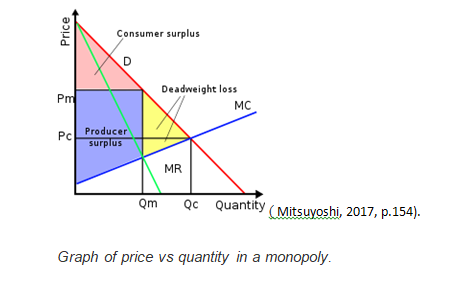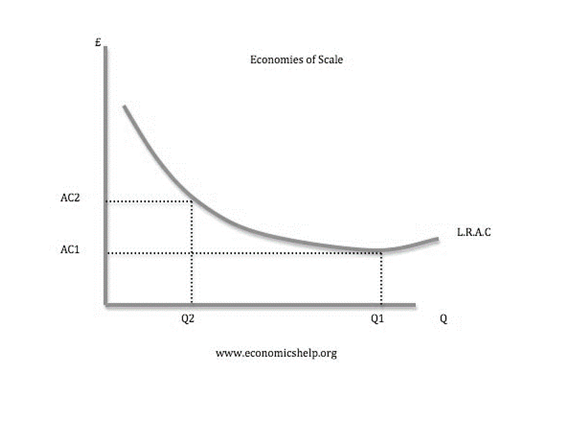Australia is among the world’s most advanced country in industrialization. Industrialization is a large enterprise entity that is actively engaged in industrial professional and commercial activities. An industry is involved in transacting its activities such as manufacturing goods and providing services to their customers. The main aim of a business industry is to maximize on profit but there are other businesses that are nonprofit based and are meant for charitable missions (Webster, 2014, p. 165).For an industry to be successful, marketing strategies should be adhered to and most importantly the business market.
Economic theories have helped industrial owners to have a better consideration of the real-world business associated problems by using economic reasoning to maximize on their profit. In industrialization, business market is a term that refers relationship between a seller and a buyer. It includes the selling of products and offering of services to potential business owners to be consumed or to be assembled to make new products. Monopoly, oligopoly and duopoly are examples of business fields that comprehend the relationship between the sellers and the buyers in a market field (Hasbro, 2012, p. 76). To start with, this is an interesting case study that outlines the relationship that is there in the market. As an upcoming business owner it is important to be conversant with the type of relation you ought to imply on in your marketing field. Depicted below is an economic coherent analysis on Monopoly, oligopoly and duopoly based on the relationship between business owners and the customers and how they affect the Australian industry.
Monopoly
Monopoly is a market structure which has many buyers but only one seller. To get a better understanding of monopoly, we will look at its description (Hasbro, 2012, p. 123) Monopoly is a marketing field that has a single seller, selling their unique products to multiple potential buyers in the market. In this kind of market, the business owner faces no competition since he/her runs a sole proprietorship business thus maximizing their profits. One of the advantages associated with monopoly is that the owner of the business controls the price in the market of his/her products or services. Monopolies emerge as a result of industries large-scale production of goods and services thus making the long-run average of production of cost to fall. This makes monopoly to emerge naturally because of the connection between the scale of operation and the average cost (Hasbro, 2012, p. 198).Below is a diagram that shows an industry in Australia with economic scale. The diagram reflects that as output escalate, the run average cost drops.
Many industries in Australia have embraced monopoly in their day-to-day running of their firm. An example is a steel industry which is a large-scale industry opt to implement monopoly as its marketing strategy because it wants to return it building up capital by fixing high cost on its products while producing more steel this lowering the average rate per unit of steel. Monopoly has an advantage competitive strategy over other companies producing a similar product (Hasbro, 2012, p. 142). Despite this it comes with some cons. There are reasons why monopoly is bad for Australian economy since it prevents the market from setting prices and restricts free trade thus causing the following effects. Industries using monopoly marketing strategy are lone providers and can set any price for their goods and services as they wish. Gasoline industry in Australia is a good example where their drivers could adjust to transit but most of them cannot. This is as a result of inelastic demands of their service thus fixing their prices high.
Oligopoly
An oligopoly involves the compound intertwining of small companies within a large industry (Kemp, 2016, p. 176). An oligopolistic industry is considered as a big industry that is dominated by few associates who are reliant upon the products, the investments and the transitions occurring within the companies. Inherent associated with oligopolistic are problems with price-fixing, monopolies and collusion. In Australia this structure, the oligopoly is shared by small producers and comes with the following advantages; it creates high products profits by creating a trickle-down effect within the Australian industry. The price fixing provides high profits, which in turn filter down the wages of employees. The second pro with oligopoly is that it simplifies the market competition for consumers. This helps the customers to have an easy choice when finding the possible product in the market
Effects
Despite the mentioned above pros with oligopoly it also have some cons that includes the following; fewer choices for customers to choose from since no product meet the end consumer needs. Another shortcoming associated with oligopoly theory is that innovation becomes non-existent. This marketing theory discourages innovation where numerous strategies creates barriers to innovation. Price fixing is also another con that is brought about by oligopoly theory (Kemp, 2016, p. 143).
Policy
From the above description of the marketing theory in Australia it vividly clear that business owners are maximizing their profits while the end user is suffering from the raised cost price of products. As depicted from the Gasoline industry, people in Australia have no option but to come to an agreement with the high cost offered by the company. It’s arguably true to say that the Australian government should impose some policies to mitigate this alarming issue of sellers gaining more profit at the expense of the consumer. When it comes to monopoly theory the Australian government ought to implement the following policies; (1) liberalization of markets. This policy will deregulate the market by allowing near firms/companies to enter and compete in the market. (2) Regulation of prices. The government should regulate prices by introducing taxes to monopoly industries. (3) Break up existing monopolies. This will effectively increase competition in the market since all industries will be having a fixed price (Webster, 2014, p. .132).

Conclusion
The Australian industrialization should implement the above mentioned policy to eradicate the issue of unbalanced marketing strategies. From my case work above it arguably true to say that some of this marketing theory favor the business owner only while the consumer suffers at the expense of the seller maximizing their profits. Economic in Australia is not sustainable for near firms to grow thus the government should foresee the implementation of marketing policy.






